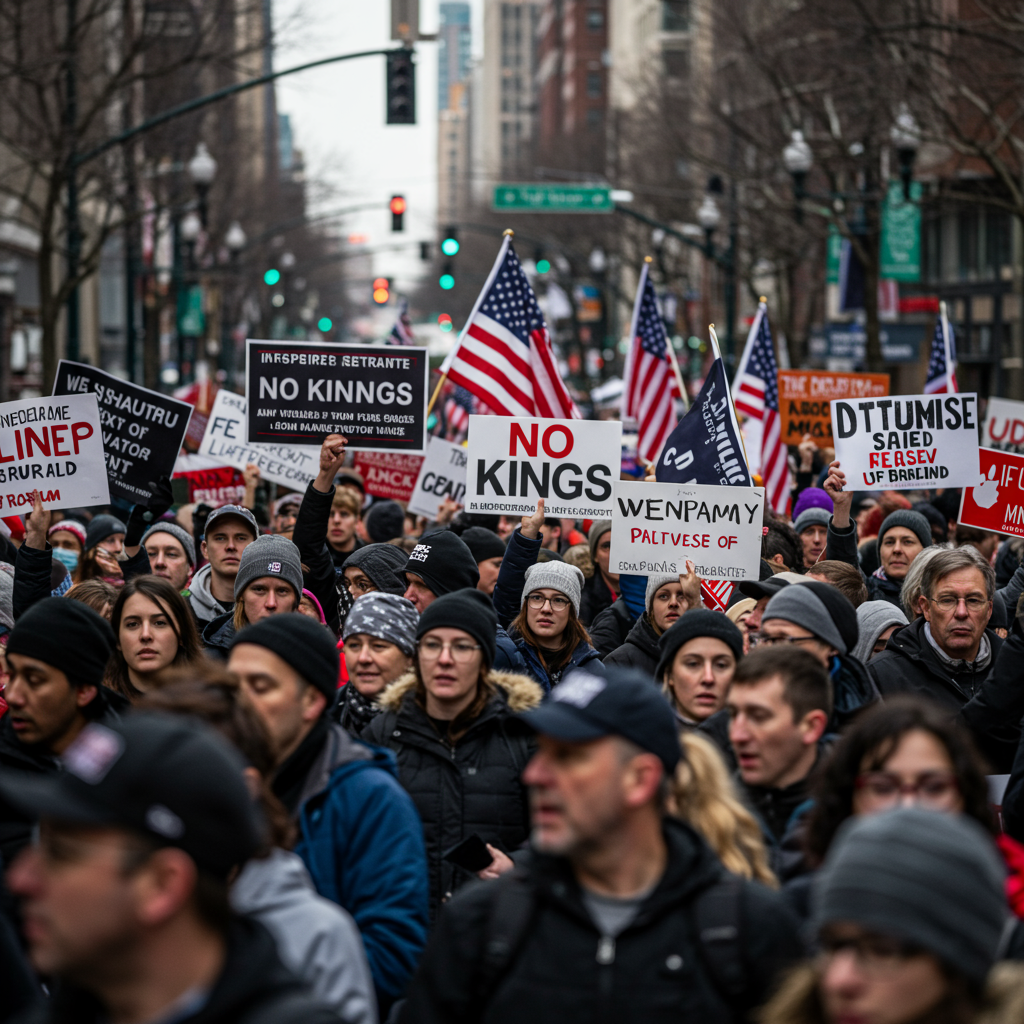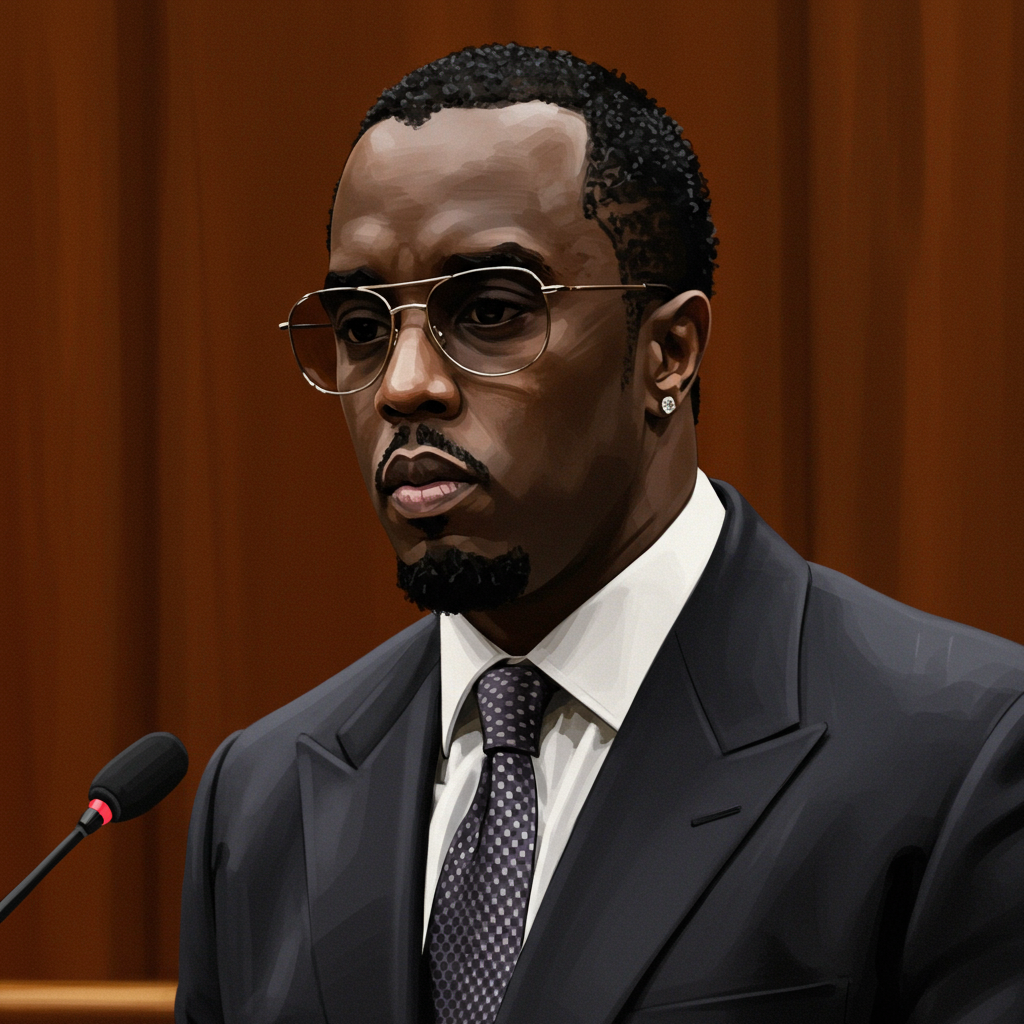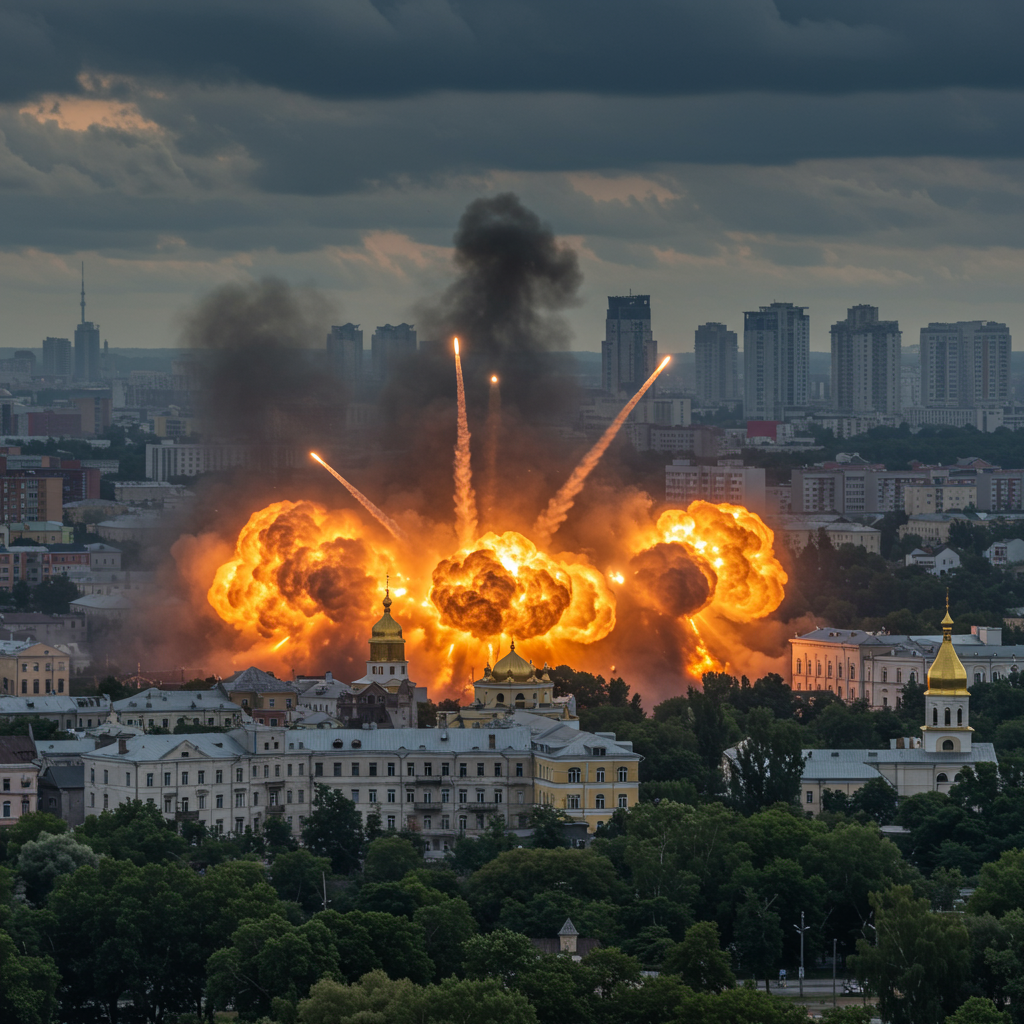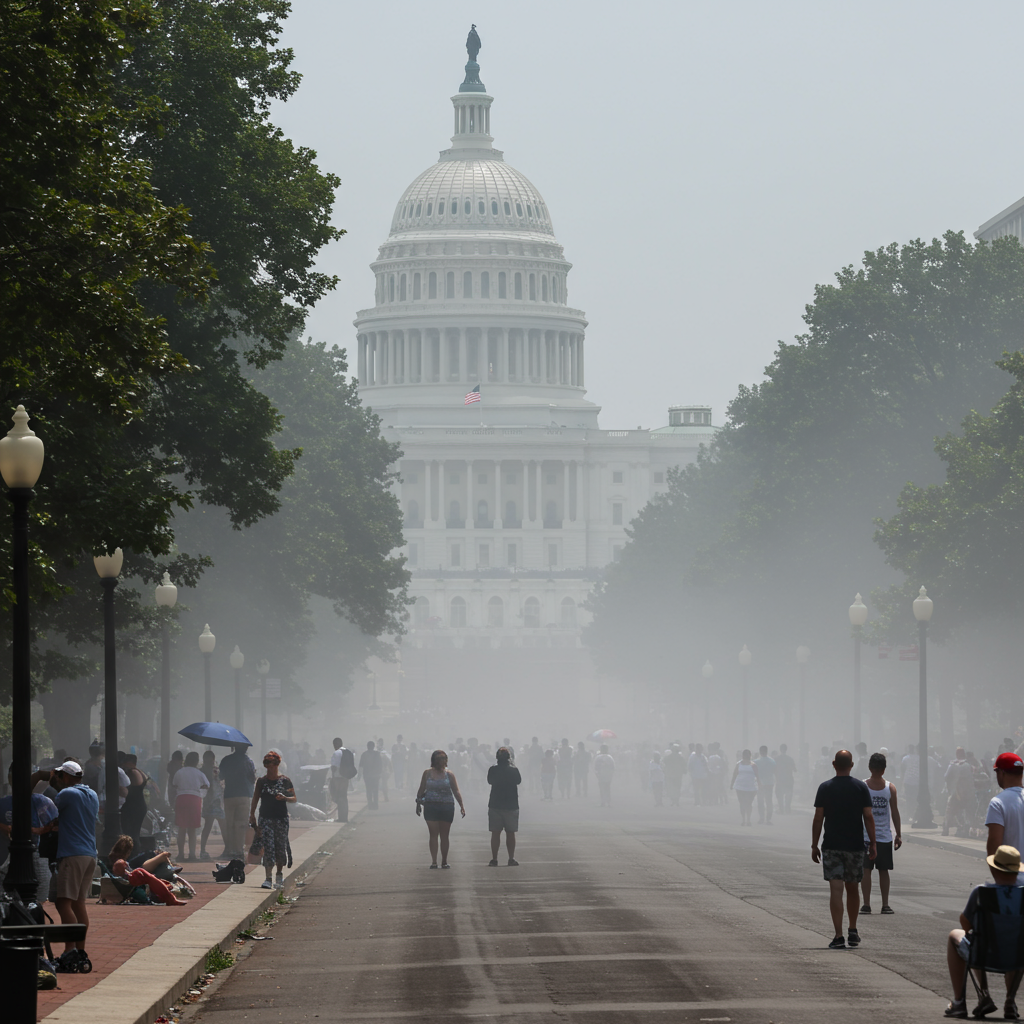Across the United States and beyond, millions rallied on October 18, 2025, in the second monumental wave of “No Kings” protests. These nationwide demonstrations, fueled by escalating discontent with President Trump’s policies and perceived authoritarian actions, aimed to emphatically assert the enduring principles of American democracy. From major urban centers to rural communities, citizens united to voice their deep-seated concerns, asserting that in America, the people, not a monarch, hold ultimate power. Organizers projected record-breaking turnout, anticipating an even greater mobilization than the previous June events.
The “No Kings” Movement: A Unified Stand for Democracy
The “No Kings” movement is a robust coalition of progressive organizations advocating for democratic accountability. Their core message is clear: President Trump’s administration, they contend, has overstepped constitutional boundaries, behaving “more like a monarch than an elected official.” This sentiment echoes the foundational American struggle against tyranny, drawing direct parallels to colonists’ grievances with King George III. These widespread No Kings protests serve as a powerful public declaration that the American people will actively resist any perceived erosion of their fundamental rights.
Origins and Evolution: From June to October 2025
The October 18th demonstrations represent the second massive mobilization by the “No Kings” network. The initial wave occurred in June, coinciding with President Trump’s 79th birthday and a military parade held for the Army’s 250th anniversary. Critics widely viewed this parade as a display of presidential vanity rather than a genuine tribute to the armed forces. That first peaceful protest saw an estimated 5 million participants, setting a powerful precedent for civic engagement. Organizers stated that for the October protests, President Trump had “doubled down” on concerning policies, necessitating an even larger public response.
Unprecedented Scale: Millions Take to the Streets
The October 18th No Kings protests dwarfed previous efforts, with organizers estimating over 2,500 “pro-democracy rallies” planned across all 50 U.S. states and Washington D.C. Millions of Americans participated, turning out in significant numbers not only in major cities like New York, Washington D.C., and Chicago but also in countless smaller towns. The sheer geographic breadth aimed to make the movement accessible, fostering a sense of widespread solidarity. Beyond national borders, solidarity rallies were reported in international cities including Berlin, London, Madrid, Paris, Malmö, and Melbourne, underscoring the global reach of concern over American democratic norms.
Key Grievances Fueling Nationwide Dissent
Protesters cited a wide array of specific policies and actions that fueled their resolve. Central to their concerns were:
Immigration Enforcement: Aggressive crackdowns and detentions by “often-masked” Immigration and Customs Enforcement (ICE) agents, with particular criticism leveled against operations like “Operation Midway Blitz” in Chicago.
Federal Funding Cuts: Significant reductions in federal education resources and environmental protections, including clean air and climate safeguards. Concerns were raised about the impact on schoolchildren and vital public services.
Healthcare Access: Opposition to legislative efforts like the “One Big Beautiful Bill Act,” projected to cause millions to lose health insurance due to Medicaid cuts.
Government Shutdowns & Executive Power: The ongoing, extended government shutdown, which began on October 1st, was viewed as a “constitutional test” and a deliberate tactic to cut funding for Democratic states and downsize federal programs.
Authoritarian Tendencies: Broader concerns included perceived “authoritarian power grabs,” “crackdowns on First Amendment rights,” gerrymandering, and attempts to suppress scientific facts.
Judicial and Political Interference: The Department of Justice, under a Trump ally, was seen pursuing charges against political adversaries, further raising alarms about an independent justice system.
Voices from the Ground: Protesters’ Motivations
The rallies resonated with diverse participants, each bringing unique reasons for their presence. U.S. Army veteran Brian Wofford, who lost a leg serving in Iraq, powerfully declared, “There’s no way I’m bending the only knee I have left for a king here in America,” symbolizing his unwavering commitment to democratic principles. Nineteen-year-old NYU student Annalise Smith found hope in the diverse crowds, noting it showed “humanity in society is still alive and well.” Bill Nye, “the Science Guy,” drew direct parallels between President Trump and King George III, emphasizing the suppression of scientific facts. Senators Bernie Sanders and Chris Murphy were leading speakers in Washington D.C., accusing the Trump administration of a deliberate plan to dismantle American democracy. From first-time protesters to veterans of past movements, a shared sense of “extreme frustration” and “anger” over perceived lack of accountability and the “slow degradation” of the country permeated the events.
Political Fault Lines: Divisive Reactions to the Protests
The massive No Kings protests ignited sharp political divisions, with reactions from the White House, Republicans, and Democrats starkly contrasting. The demonstrations unfolded against a backdrop of deep polarization, further highlighting the fractured political landscape.
Government Response: National Guard Deployments and Dismissals
In anticipation of the widespread demonstrations, several Republican governors, including Glenn Youngkin of Virginia and Greg Abbott of Texas, mobilized their state’s National Guards. Governor Youngkin’s spokesman stated the Guard was authorized for “state active duty for training” to ensure readiness and public safety. Governor Abbott explicitly warned against “violence and destruction,” pledging to “deter criminal mischief.” President Trump himself deployed National Guard troops to Democratic-led cities, at times overriding local objections. White House spokeswoman Abigail Jackson, when asked by NPR about the protests, dismissively retorted, “Who cares?” Director of the National Economic Council, Kevin Hassett, labeled the demonstrations “misguided,” arguing their existence ironically proved America operates without a “king.” Republicans consistently attempted to portray the marches as dangerous “anti-American” gatherings. House Speaker Mike Johnson denounced them as “‘hate America’ rallies,” accusing participants of being “communists,” “Marxists,” “antifa types,” and individuals who “hate capitalism.” President Trump, speaking from Mar-a-Lago, also stated, “I’m not a king.”
Democratic Leaders Affirm Support
Conversely, top Democratic Party leaders strongly endorsed the No Kings protests. Senate Minority Leader Chuck Schumer encouraged participants to “speak out, use your voice, and exercise your right to free speech,” suggesting Trump and Republicans were “afraid of the truth.” House Minority Leader Hakeem Jeffries characterized the protests as “what patriotism looks like,” directly refuting GOP accusations. Former Vice President Kamala Harris, the Democratic nominee in the previous year’s election, urged peaceful participation, reiterating that “in our country, the power is with the people.” Senator Bernie Sanders reframed them as “love America rallies,” emphasizing that participants believe in the Constitution and American freedom. Democrats also strategically linked the protests to the ongoing government shutdown, using it as an opportunity to challenge Trump’s executive authority.
Commitment to Peace Amidst Polarization
Despite the aggressive rhetoric from some political figures, organizers of the “No Kings” movement consistently stressed their unwavering commitment to peaceful demonstration. Jim Chapdelaine, a lead organizer in Connecticut, emphasized the importance of “building community and solidarity and unity” in a “very peaceful way.” Indivisible cofounder Leah Greenberg questioned why Republicans were “inciting and smearing millions of regular Americans” in a way that could provoke violence. Organizers actively trained thousands of activists in de-escalation techniques, dismissing claims that the protests posed a threat to national security. Public Citizen co-president Robert Weissman affirmed that “Protest is a sign of our freedom… It’s what made our country stronger for 250 years.” The movement’s leaders highlighted the significance of showing up for one’s beliefs, acknowledging that “powers that be…would prefer we all just stay at our houses.” These peaceful, disciplined, and unified demonstrations underscore a profound belief in constitutional principles and the power of collective civic action.
Frequently Asked Questions
What specific issues did the “No Kings” movement protest on October 18, 2025?
The “No Kings” protests targeted a broad range of President Trump’s policies and actions. Key grievances included aggressive immigration enforcement by ICE, significant cuts to federal education and environmental protections, legislative efforts that could reduce healthcare access, and the ongoing government shutdown. Organizers also expressed broader concerns about perceived authoritarian tendencies, crackdowns on First Amendment rights, gerrymandering, and attempts to suppress scientific facts, framing these as attacks on core democratic principles.
How widespread were the “No Kings” protests, and which organizations spearheaded the movement?
The “No Kings” protests on October 18, 2025, were remarkably widespread, with organizers reporting over 2,500 rallies across all 50 U.S. states and Washington D.C., attracting millions of participants. International solidarity protests also took place in major cities like Berlin, London, Madrid, and Paris. The movement is spearheaded by a broad coalition of progressive organizations, including the American Civil Liberties Union, Indivisible, MoveOn, and Public Citizen, alongside numerous other labor and human rights groups, demonstrating a powerful grassroots mobilization.
What was the official and political response to the “No Kings” protests?
The protests garnered sharply divided official and political responses. The White House and Republican leaders, including House Speaker Mike Johnson, dismissed them as “misguided” or “hate America rallies,” accusing participants of being “communists” or “anti-American.” White House spokeswoman Abigail Jackson was notably dismissive. Conversely, top Democratic leaders like Senate Minority Leader Chuck Schumer and House Minority Leader Hakeem Jeffries publicly embraced the protests, framing them as acts of patriotism and vital exercises of free speech to defend American democracy. Several Republican governors also mobilized their state National Guards in preparation for the demonstrations.
Conclusion
The October 18, 2025, “No Kings” protests represent a critical moment in American civic engagement. Millions of citizens, united by a deep concern for the direction of the country, demonstrated against policies and behaviors they viewed as undermining democratic institutions and constitutional values. These widespread, overwhelmingly peaceful demonstrations showcased the enduring power of collective action and the unwavering commitment of many Americans to upholding the nation’s founding principles. As the political landscape continues to evolve, the “No Kings” movement stands as a testament to the vigilance and resolve of citizens determined to ensure that in America, power truly remains “with the people.”




